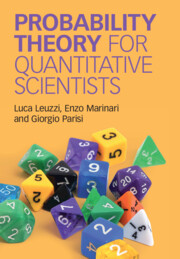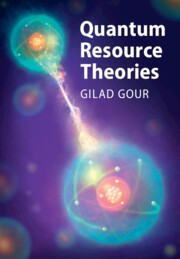Refine search
Actions for selected content:
227 results
Shadowing, sensitivity, and entropy points
- Part of
-
- Journal:
- Canadian Mathematical Bulletin , First View
- Published online by Cambridge University Press:
- 18 September 2025, pp. 1-17
-
- Article
- Export citation
Bargaining Complexity Beyond Arithmetic
-
- Journal:
- British Journal of Political Science / Volume 55 / 2025
- Published online by Cambridge University Press:
- 27 August 2025, e114
-
- Article
-
- You have access
- Open access
- HTML
- Export citation
4 - Connecting Thermodynamics with Statistical Mechanics
-
- Book:
- Statistical Mechanics for Physicists and Mathematicians
- Published online:
- 28 July 2025
- Print publication:
- 14 August 2025, pp 111-167
-
- Chapter
- Export citation
On the impact of exposure to different languages on Theory of Mind in neurotypical and autistic children
-
- Journal:
- Bilingualism: Language and Cognition , First View
- Published online by Cambridge University Press:
- 01 August 2025, pp. 1-16
-
- Article
-
- You have access
- Open access
- HTML
- Export citation

Probability Theory for Quantitative Scientists
-
- Published online:
- 24 July 2025
- Print publication:
- 14 August 2025
Chapter 7 - Naturalism’s Financial Sublime
- from Part II - Histories
-
-
- Book:
- Money and American Literature
- Published online:
- 03 July 2025
- Print publication:
- 17 July 2025, pp 125-141
-
- Chapter
- Export citation
Chapter 8 - Entropy and synthesis
-
- Book:
- The Pattern of Change
- Published online:
- 17 June 2025
- Print publication:
- 03 July 2025, pp 212-269
-
- Chapter
- Export citation
2 - Canonical Distribution
-
- Book:
- Stochastic Thermodynamics
- Published online:
- 09 June 2025
- Print publication:
- 19 June 2025, pp 23-37
-
- Chapter
- Export citation
8 - Dynamics of a Compressible Flow Field
-
- Book:
- Aerodynamics for Engineers
- Published online:
- 12 June 2025
- Print publication:
- 12 June 2025, pp 504-578
-
- Chapter
- Export citation

Quantum Resource Theories
-
- Published online:
- 03 May 2025
- Print publication:
- 10 April 2025
6 - Entropies and Relative Entropies
- from Part II - Tools and Methods
-
- Book:
- Quantum Resource Theories
- Published online:
- 03 May 2025
- Print publication:
- 10 April 2025, pp 266-307
-
- Chapter
- Export citation
Directional behavioral spillover and cognitive load effects in multiple repeated games
-
- Journal:
- Experimental Economics / Volume 22 / Issue 3 / September 2019
- Published online by Cambridge University Press:
- 14 March 2025, pp. 705-734
-
- Article
- Export citation
Chapter 15 - Reducing Surprisal and Entropy
- from Part III - Mathematical Theories
-
- Book:
- Looking Ahead
- Published online:
- 20 March 2025
- Print publication:
- 06 March 2025, pp 163-173
-
- Chapter
- Export citation
6 - Equilibrium Thermodynamics
- from Part I - Continuum Physics
-
- Book:
- An Introduction to Continuum Physics
- Published online:
- 06 February 2025
- Print publication:
- 13 February 2025, pp 313-392
-
- Chapter
- Export citation
Delusions as 'wrong beliefs': a conceptual history: commentary, Ghalib
-
- Journal:
- The British Journal of Psychiatry / Volume 226 / Issue 2 / February 2025
- Published online by Cambridge University Press:
- 17 March 2025, p. 117
- Print publication:
- February 2025
-
- Article
- Export citation
4 - Digital Information Sources
-
- Book:
- Fundamentals of Digital Communication Systems
- Published online:
- 10 March 2025
- Print publication:
- 23 January 2025, pp 138-161
-
- Chapter
- Export citation
An Entropy Approach to the Scaling of Ordinal Categorical Data
-
- Journal:
- Psychometrika / Volume 54 / Issue 2 / June 1989
- Published online by Cambridge University Press:
- 01 January 2025, pp. 203-215
-
- Article
- Export citation
Generating Multivariate Ordinal Data via Entropy Principles
-
- Journal:
- Psychometrika / Volume 83 / Issue 1 / March 2018
- Published online by Cambridge University Press:
- 01 January 2025, pp. 156-181
-
- Article
- Export citation
Bias in Estimation of Misclassification Rates
-
- Journal:
- Psychometrika / Volume 71 / Issue 2 / June 2006
- Published online by Cambridge University Press:
- 01 January 2025, pp. 387-394
-
- Article
- Export citation
The Knowledge Content of Statistical Data
-
- Journal:
- Psychometrika / Volume 62 / Issue 1 / March 1997
- Published online by Cambridge University Press:
- 01 January 2025, pp. 133-161
-
- Article
- Export citation

